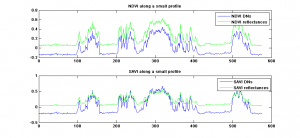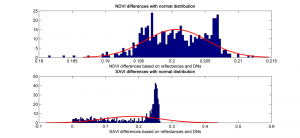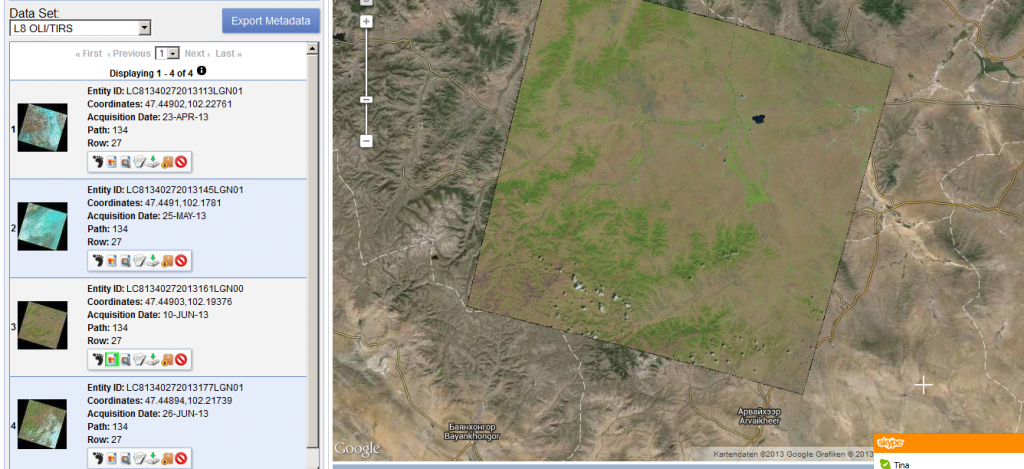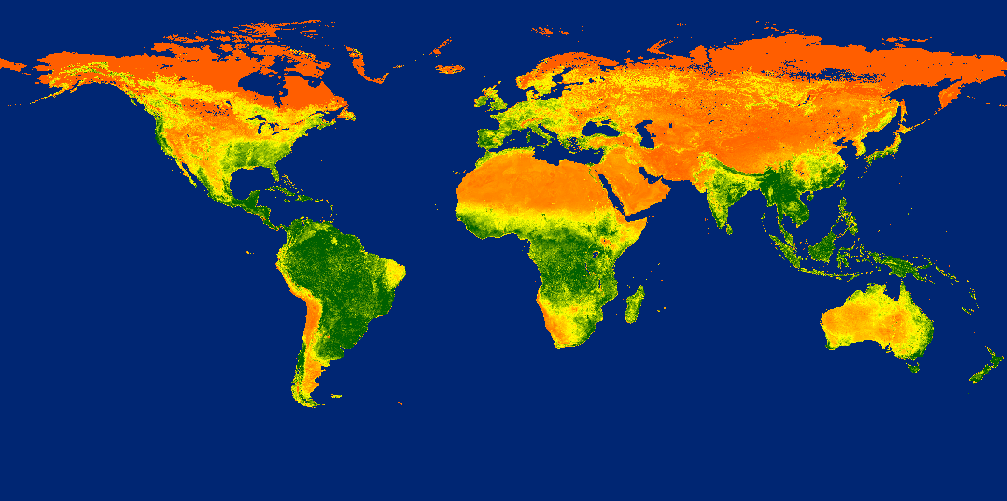In one of my last seminars relating remote sensing techniques I was blamed for calculationg the NDVI and SAVI directly with the ModelMaker in Erdas Imagine using digital numbers (so-called DNs) instead of reflectance values. So I analyzed the influence of using DNs instead of reflectances. You can see some little thoughts and results on that here…
I used a LANDSAT 7 scene from Marocco (Path 201, Row 39, dated 08/2000). How was the workflow?
- Calculate the NDVI with DNs and reflectance values (according to the Landsat Handbook and the article by C.J. Tucker):
NDVI = ( IR - R ) / ( IR + R )
- Calculate the SAVI with DNs and reflectance values using a L-value of 0.9 (arid area with sparse vegetation coverage, see the paper by A.R. Huete)
SAVI = ( IR - R ) / ( IR + R + L ) * ( 1 + L )
Here are the values for a profile crossing some vegetation patches.
The differences between these profiles are normally distributed and show just a minor standard deviation of about 0.01 for the NDVI- and 0.02 for the SAVI-values.
Unfortunately you won’t get away with it so easily. Let us examine another profile from the same scene along a floodplain with denser vegetation. We won’t find so much ground noise in it and will distinguish the results better.
Oh, that doens’t look good:
One look in the histogram shows the differences according to the SAVI.
The soil adjustment using the factor L in the formula distorts the distribution. The profile of the NDVI is just shifted by using reflectance values instead of DNs. But the SAVI profile shows similar values at the vegetdated areas but differences at the ground-values. This could tell us, that there is no difference in the results of SAVI whether you calculate it from the DNs or reflectance values.
At the end we must remember one thing: the calculation of the NDVI / SAVI from DNs using the ModelMaker in Erdas Imagine. Nevertheless you will receive a qualitative result to interprete the vegetation intensity in your working area.






Hi. You have very low values as example. I don´t understand. Lets say that you have a vegetation value that ranges within 0.5-0.7 with DN´s, does it mean that you will have something lower with reflectance?. Supposedly, if you want to compare dates and values (different type of vegetation or stress grade) you have to use reflectance, but apparently the signal for vegetation is lower?
the values depends upon area of interest but actually for the whole image it range from 1 to 0 to -1